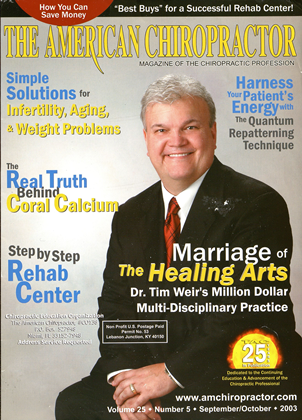for Work M any ptoPLi- wear special footwear at work. Occupational health guidelines and employers often require the use of protective work boots. When fitting patients for orthotics, ask what type of footwear is worn throughout the workday, as well as during recreation and relaxation periods. An orthotic designed for work boots can be very helpful. While generic insoles and off-the-shelf foot supports provide some comfort, workers appreciate a custom-made orthotic designed specifically for work boots. Protection from Injury Work boots protect the feet and ankles from work-related injuries. This category of footwear contains primarily ankle-high boots made from thick, sturdy materials. Most have a special sole, which varies depending on the work conditions (slip-resistant rubber, large lugs for traction, non-conductive to electricity, etc.). Many also have steel, non-crushable protection for the toes. These boots are often quite heavy. Because weight on the feet leads to fatigue, a lightweight orthotic is appreciated. Check the weight of the orthotics you recommend for work boots. Support for Ankles and Arches Better work boots provide excellent external support and help hold the foot and ankle in alignment during strenuous activities. However, the insole must fit the many different shapes of feet that wear that same size. Therefore, the internal support is generic, with a strong shank under the arches, but no specific support. Foot and ankle fatigue increases as the workday progresses, especially for workers with non-standard feet, whether flat or high-arched. A custom-made orthotic improves foot and ankle function during strenuous work activities. It must cause little or no interference in the proprioceptive feedback system, and the foot and ankle must be kept in good balance. This means controlling the amount of pronation during gait, preventing excessive ankle and calcaneal eversion, and supporting the three-arch complex. Support for the Pelvis and Spine The best work boot orthotic also ensures proper alignment of the pelvis and spine. Biomechanical asymmetries transmit abnormal forces into these areas, resulting in persistent subluxations and susceptibility for back injuries. The integration of a pronation wedge or heel lift, when needed, can greatly improve the function of the pelvis, sac-roiliac joints, and spine.1 Many chronic back conditions associated with work postures resolve when custom-made orthotics are worn in work boots. Shock Absorption Long-term standing on concrete and other rigid materials can lead to back problems. The best modern orthotics are designed to reduce shock waves generated up the leg into the knee, hip, and spine. The best materials for work boot orthotics are the viscoelastic polymers (such as Zorbacel® and Poron®), a group of materials created to enhance the body's ability to dissipate shock stress to sensitive and easily damaged tissues.2 Viscoelastic shoe inserts can significantly reduce reported pain levels in patients with low back pain.' A report on soccer referees participating in a five-day tournament found, "The incidence of soreness in Achilles tendon, calf, and back were significantly reduced by the use of shock absorbing heel inserts."4 Orthotics made for work boots should take full advantage of the newer viscoelastic materials. Moisture Control The sturdy construction of work boots often causes substantial heat accumulation, especially when working indoors, or during the summer. Sweat often builds up, which can result in foot odors and fungal infections. The feet can excrete as much as half a pint of moisture daily.5 Orthotics for work boots should incorporate special materials that pull sweat away from the foot surface. Such an orthotic is able to control most cases of hyperhidrosis, and even normal foot moisture is handled efficiently. Additional Orthotic Concerns ■ Comfort. A good orthotic must be easy to fit into the work boot, with a minimum of modification. There should be no sensation of "something in my shoe," which would distract from work performance. The newer materials tend to be more comfortable and less intrusive. The break-in period is usually much shorter, and workers quickly become accustomed to custom-made orthotics designed with viscoelastic polymers. An orthotic used during work must be supportive, yet flexible, so that it doesn't hinder natural biomechanical performance. Longitudinal flexibility (especially at the forefoot) is a major indicator of a comfortable orthotic for work boots. ■ Durability. Since many work activities produce high forces and stresses on an orthotic. it must be capable of sustaining repetitive physical insults, with no perceptible decrease in support, performance, or shock absorption. Moisture and heat must not cause significant degradation of any of the above factors. Once again, the newer materials are usually the most durable, and their physical characteristics can be maintained the longest. Conclusion Orthotics need to be specifically selected for use in work boots. They should support the arches and spine, be lightweight, and offer shock absorption, moisture control, comfort, and durability. Patients with properly fitted and selected orthotics for their employment have noticeably less work-related fatigue. I See page 59 for References Dr. John J. Danchik is the seventh inductee to the American Chiropractic Association Sports Hall of Fume. He is the current chairperson of the United States Olympic Committee s Chiropractic Selection Program. He lectures extensively in the United States and abroad on current trends in sports chiropractic and rehabilitation. Dr. Danchik is an associate editor of the Journal of the Ncuronuisculoskeletal System and the Journal of Chiropractic Sports Injuries and Rehabilitation. He has been in private practice in Massachusetts for twenty-six years.
 View Full Issue
View Full Issue






